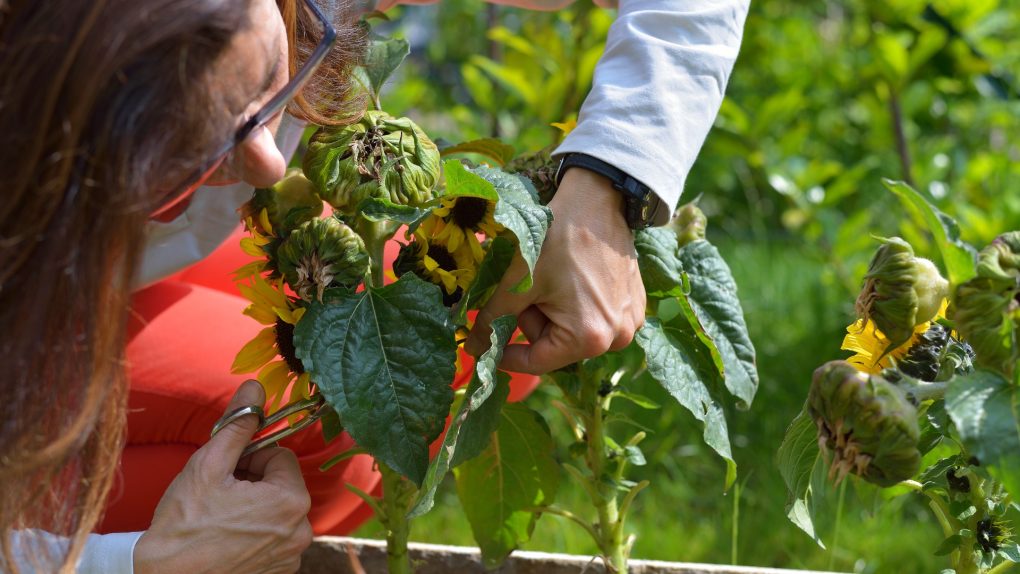How Long Do Dwarf Sunflowers Last? A Guide to Their Lifespan
Dwarf sunflowers typically last 2-3 months from germination to the end of their blooming period. The longevity of these sunflowers is influenced by the specific variety, growing conditions, and care provided.

Their lifecycle consists of germination (1-2 weeks), growth (30-45 days), blooming (2-3 weeks) and seed production (around 1 month). Dwarf sunflowers tend to have a shorter lifespan than other sunflower varieties due to their compact size and faster maturation. Regular watering, fertilization, and adequate sunlight exposure can help in prolonging their blooming time and overall lifespan.
Table of Contents
Factors that Affect the Lifespan of Dwarf Sunflowers
Dwarf sunflowers are beautiful and easy to grow, but their lifespan depends on various factors. Here are some of the factors that can affect the lifespan of dwarf sunflowers:
Genetics
The genetics of the dwarf sunflower variety you choose can affect its lifespan. Most dwarf sunflowers are annuals, meaning they complete their life cycle in one growing season. However, some varieties may be perennial, meaning they can live for several years.
Choosing a variety that is well-suited to your growing region and climate is important. Some varieties may be more tolerant to heat, drought, or cold, which can affect their lifespan.
Environmental Factors
The environment in which you grow your dwarf sunflowers can also affect their lifespan. Sunflowers require full sun, well-drained soil, and regular watering. Their lifespan may be shortened if they don’t receive enough sunlight or water.
Extreme temperatures can also affect the lifespan of dwarf sunflowers. They prefer moderate temperatures between 70-80°F during the day and 50-60°F at night. If temperatures get too hot or cold, it can stunt their growth or cause them to wilt.
Pest and Disease Control
Pests and diseases can also affect the lifespan of dwarf sunflowers. Common pests include aphids, caterpillars, and spider mites. These pests can damage the plant and shorten its lifespan if left untreated.
Diseases such as powdery mildew, rust, and downy mildew can also affect the lifespan of dwarf sunflowers. These diseases can cause the plant to wilt, lose leaves, and eventually die. Therefore, monitoring your plants regularly and treating any issues promptly is important to prolong their lifespan.

How to Prolong the Life of Dwarf Sunflowers
Dwarf sunflowers are a beautiful addition to any garden, and they can last for several weeks with proper care. Here are some tips on how to prolong the life of your dwarf sunflowers:
Watering and Fertilization
Dwarf sunflowers require regular watering to keep their soil moist, but not waterlogged. Once a week, or more frequently during hot, dry weather, water your plants deeply. Leaves should not be wetted, which can cause fungus infections. Use a balanced fertilizer every two weeks, such as a 10-10-10 formula, to feed the plants. This will give the plants the nutrients they need to grow strong and healthy.
Pruning and Deadheading
Pruning and deadheading are important for prolonging the life of your dwarf sunflowers. Prune off any dead or yellowing leaves to prevent the spread of disease. Deadhead the spent blooms by cutting them off at the base of the flower head. This will encourage the plant to produce more flowers and extend the blooming period.

Harvesting and Storing Seeds
If you want to save the seeds from your dwarf sunflowers, wait until the flower heads have dried out and turned brown. Cut off the head and hang it upside down in a dry, well-ventilated area. Once the head is completely dry, gently rub the seeds out of the head and store them in a cool, dry place. The seeds can be planted next year to grow new dwarf sunflowers.
